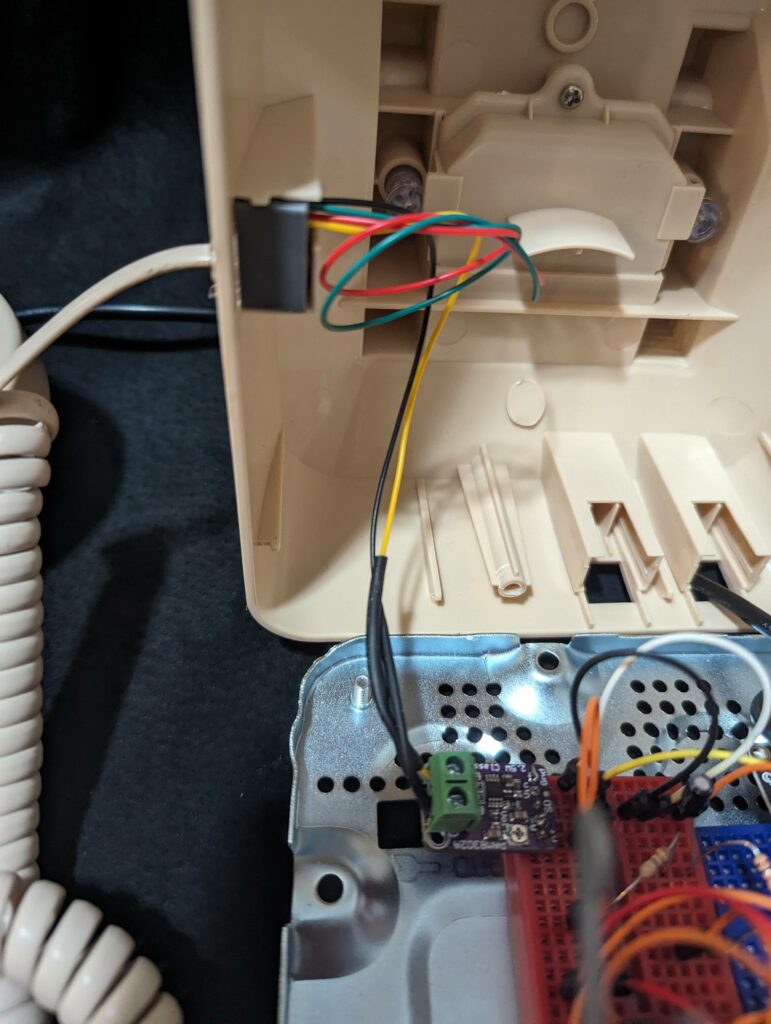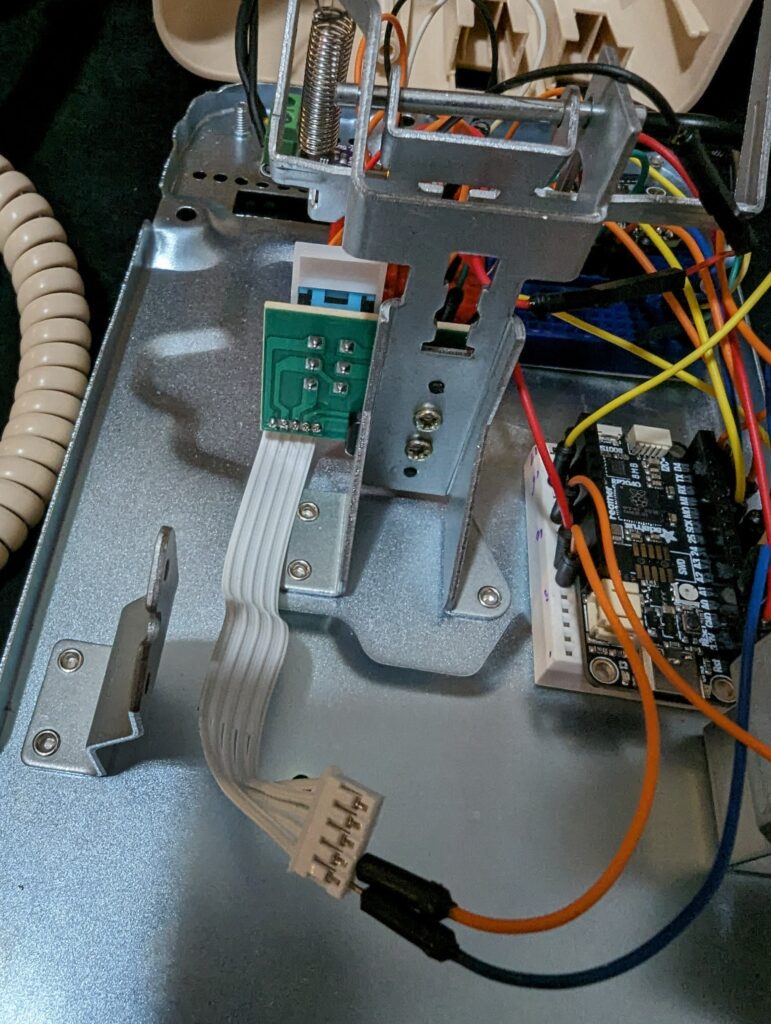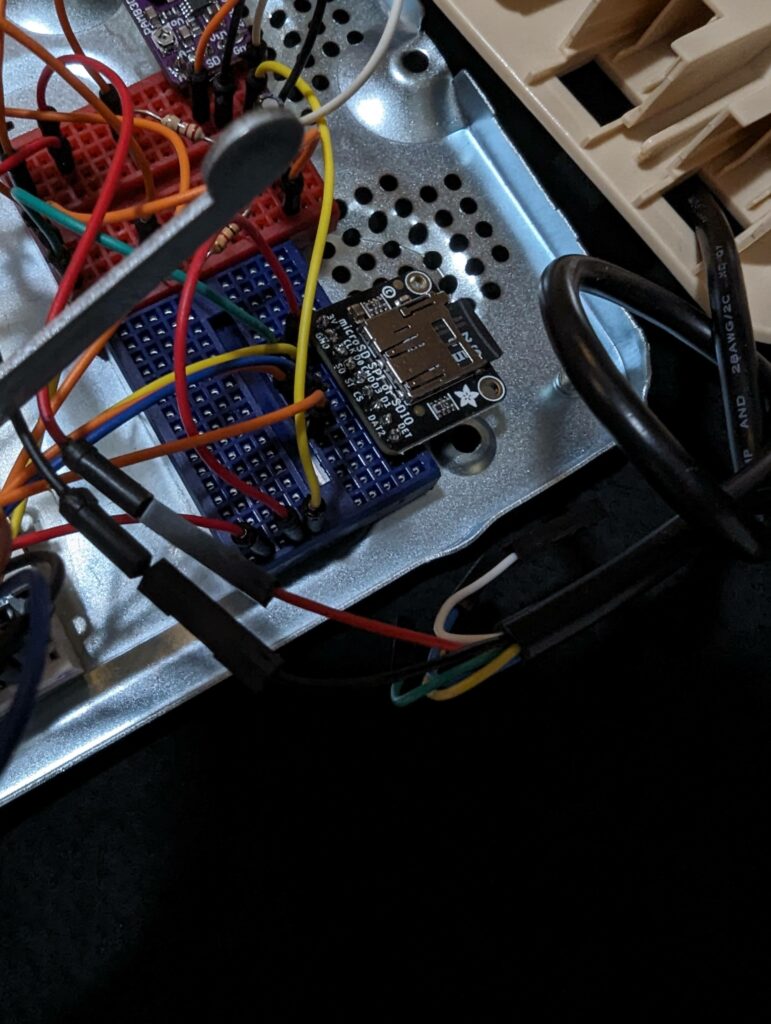You know how I go on the @jococruise most years. It’s really a blast. But there are a couple things about this cruise that you might not know.
1. People often decorate their cabin doors. This can be more elaborate or less elaborate. One person decorated their door to look like a giant game of Donkey Kong. Another decorated their door to look like it was just more hallway.
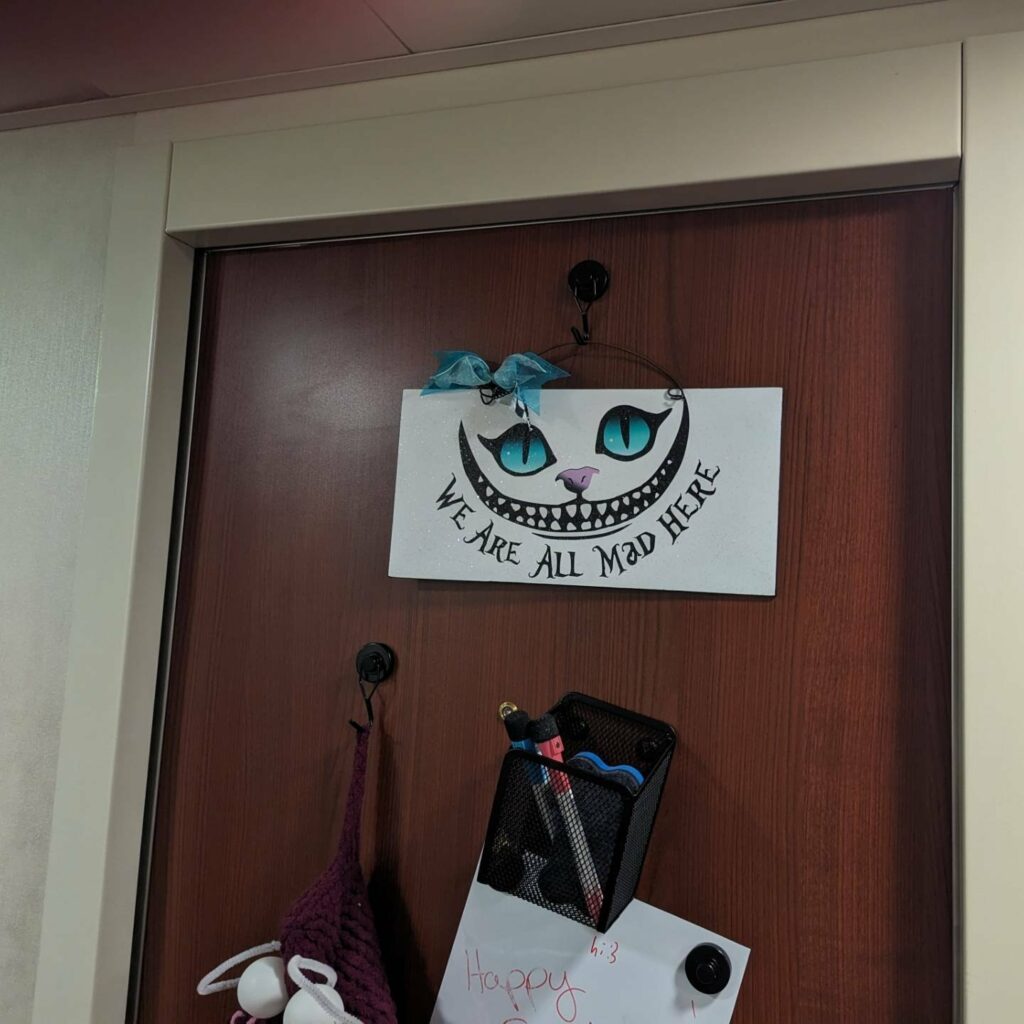
2. Some very kind JoCoNauts created the JoCo Passporto, which they create and give freely to folks who ask for it. They also create a bunch of passport stamps that they place around the ship which you find and stamp your passport with. But also, other cruisers make and bring their own stamps for people to add to their passports. It’s a whole lot of fun.
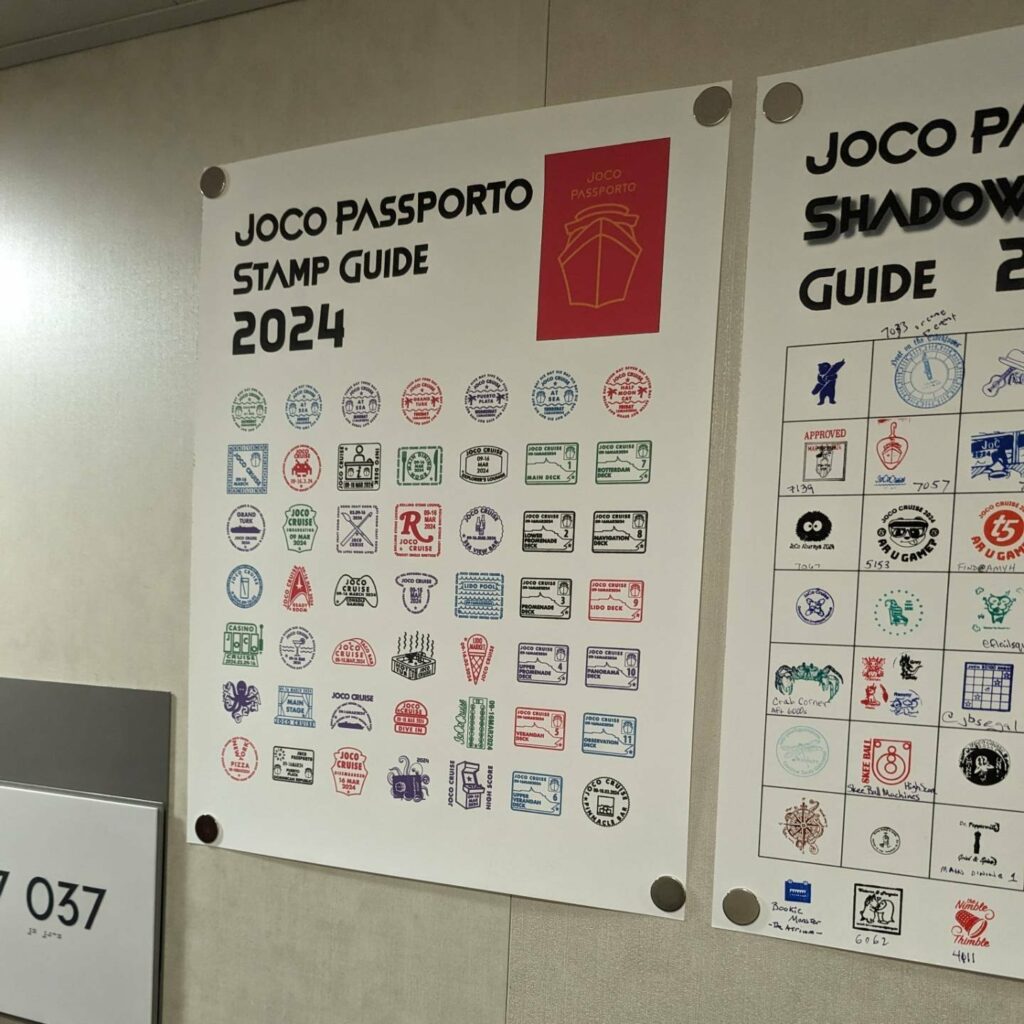
So, for the past few years, I’ve wanted to both decorate my door, and make a stamp. And maybe even some stickers. But what? What other thing is happening this year?
3. Oh yeah. It’s 20 years since ilovebees! Because another thing you might not know is that:
4. there is an onboard social media forum called twitarr, also created and maintained by another kind JoCoNaut. On twitarr, people can post about their doors, or how they tried to install a 20 year old website on their cabin door, and it’s maybe been hacked?
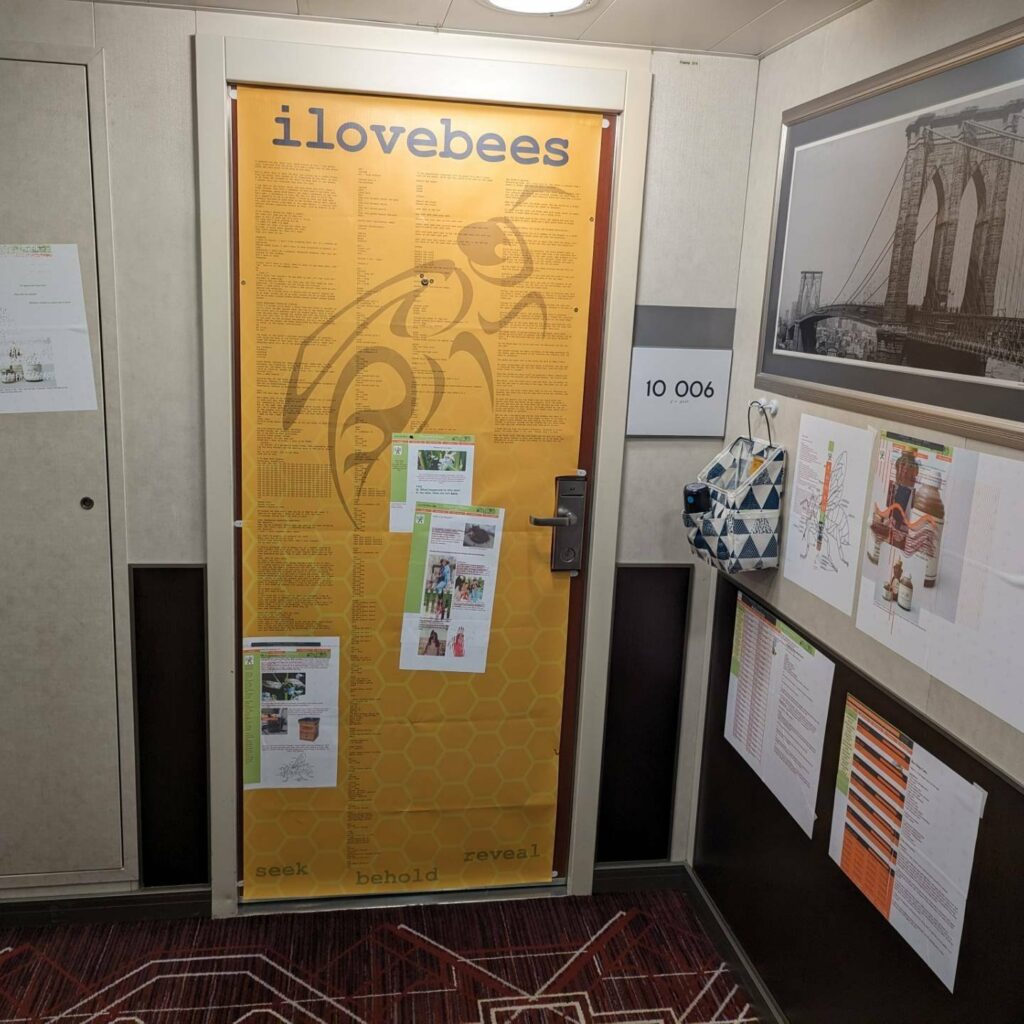
Did you know you can install a website on a cabin door? Well, not really, but if you print the website on vinyl sticker sheets, you can attach it to your door! The door image was printed on thick vinyl banner material and attached using a combination of command strips and magnets. On the banner, in addition to the ilovebees text at the top, the bee logo, and the seek/behold/reveal at the bottom, there were four columns of text. Each column of text was a different part of the story that was hidden on the website. Vinyl sticker sheets printed with the ilovebees webpages were attached to the banner and eventually to the walls around our door.
In the image above, you can see eight of the hacked webpages that we printed out. The pages were added to the display on a daily basis, paralleling how the story was revealed to players over the weeks that the game took place.
On twitarr, I was able to let other JoCoNauts know what was going on and invite them to have a look/take a sticker/stamp their Passporto.
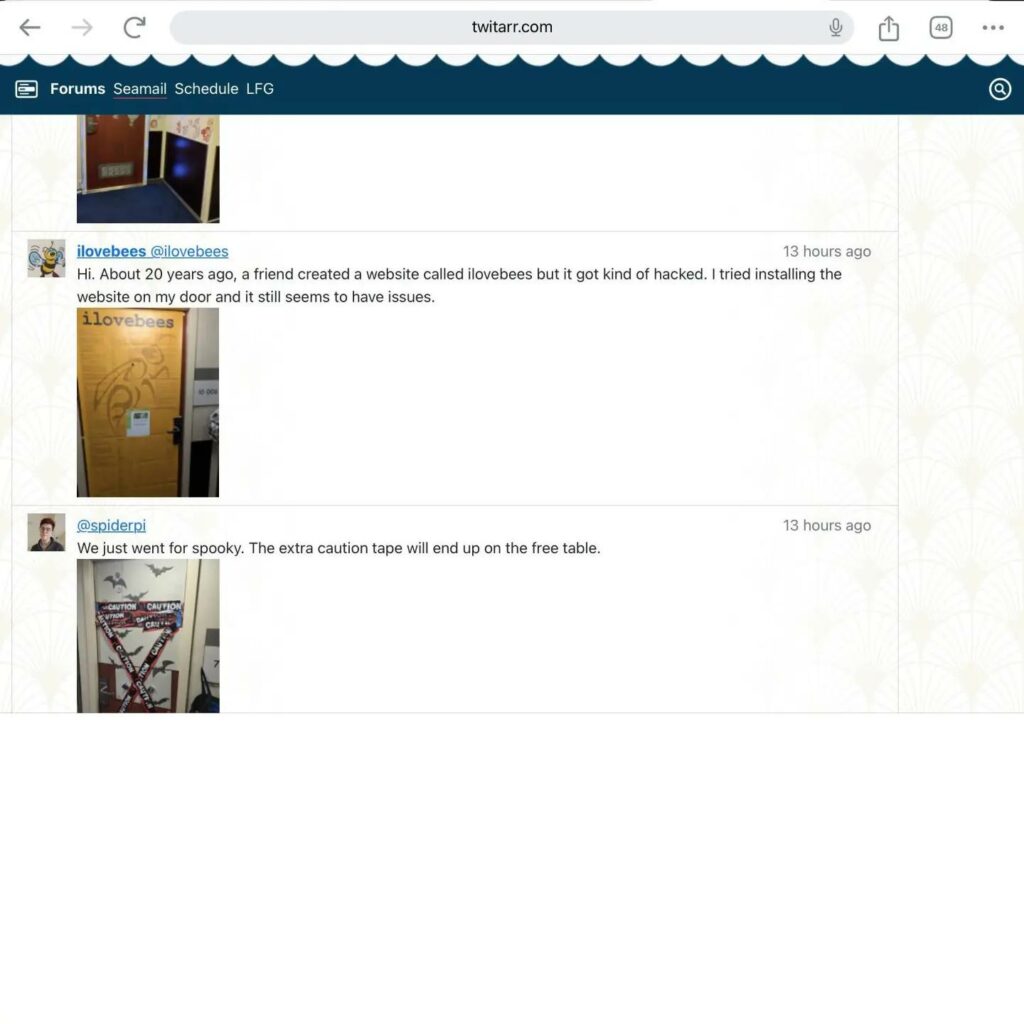
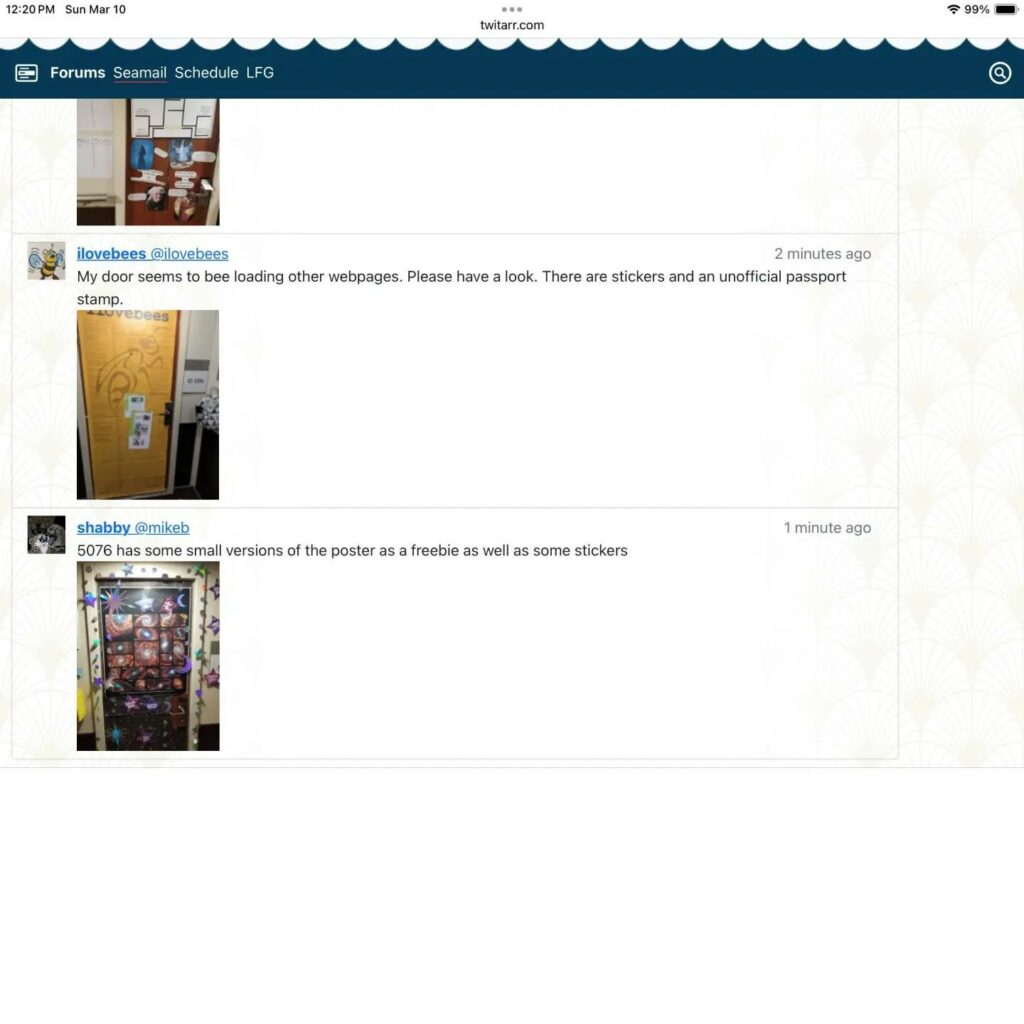
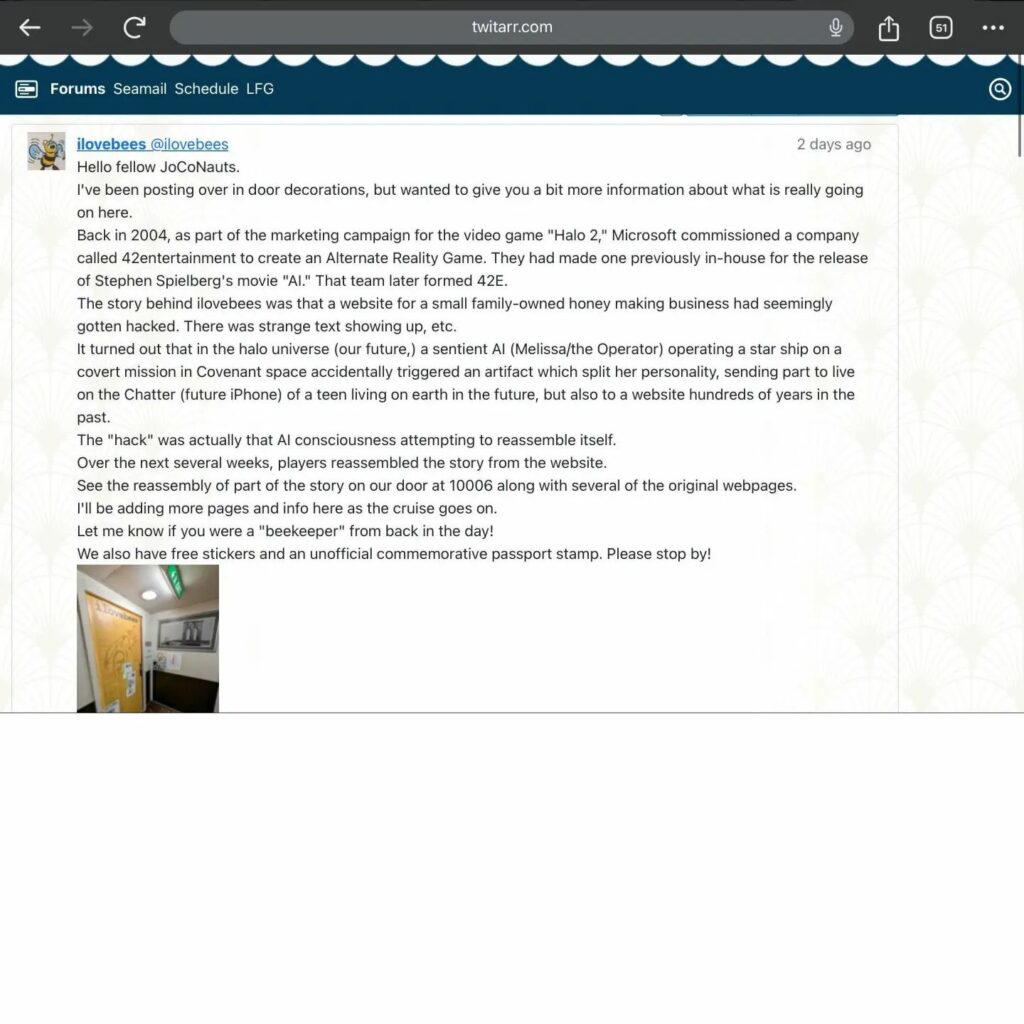
Here is the text from the third image, explaining what is going on:
“Back in 2004, as part of the marketing campaign for the video game, Halo 2, Microsoft commissioned a company called 42Entertainment to create an Alternate Reality Game. They had made one previously in-house for the release of Stephen Spielberg’s movie AI. That team later formed 42E.
The story behind ilovebees was that a website for a small family-owned honey making business had seemingly gotten hacked. There was strange text showing up, etc.
It turned out that in the Halo universe (our future), a sentient AI (Melissa/the Operator) operating a star ship on a covert mission in Covenant space accidentally triggered an artifact which split her personality, sending part to live on the Chatter (future iPhone) of a teen living on earth in that future, but also to a website hundreds of years in the past. The “hack” was actually that AI consciousness attempting to reassemble itself.
Over the next several weeks, players reassembled the story from the website.
See the reassembly of part of the story on our door along with several of the original webpages. I’ll be adding more pages and info here as the cruise goes on.
Let me know if you were a beekeeper from back in the day! We also have stickers and an unofficial passport stamp!”
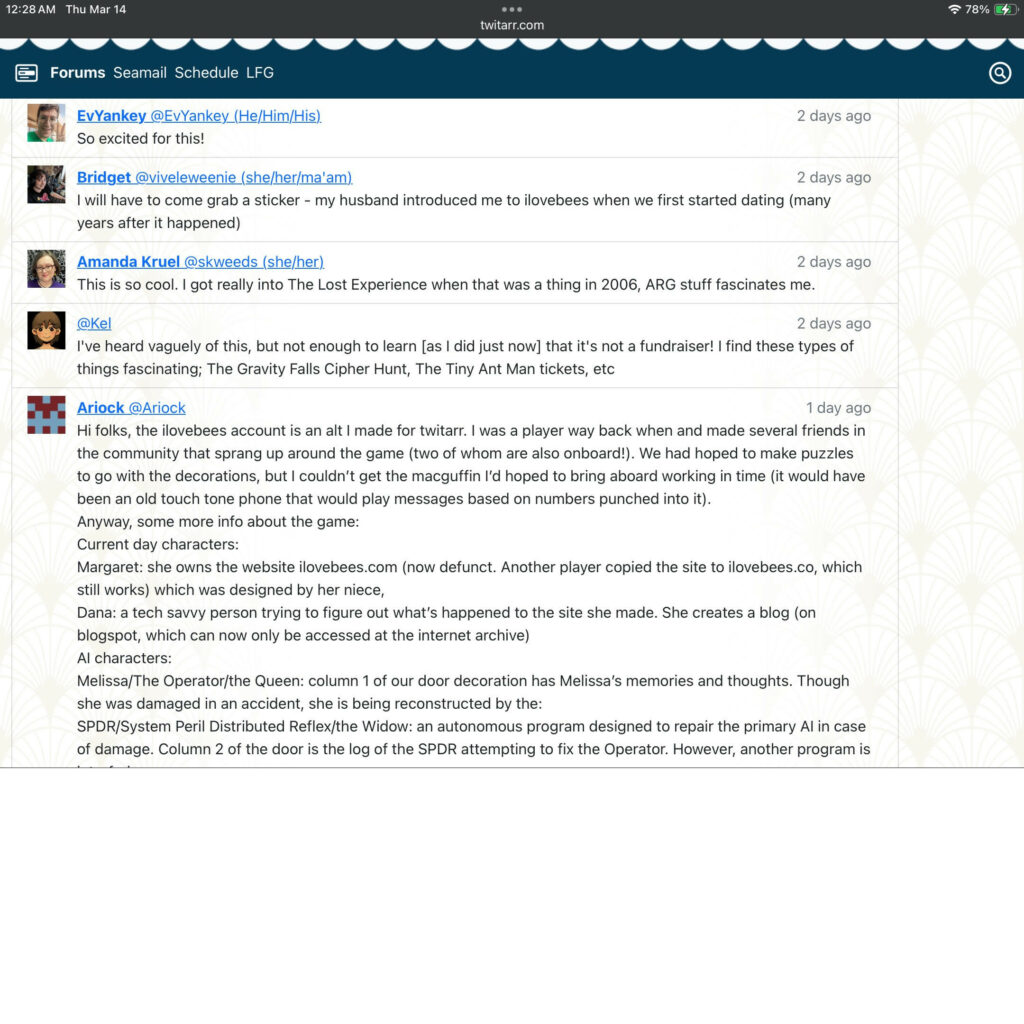
The writeup got several kind responses from folks.
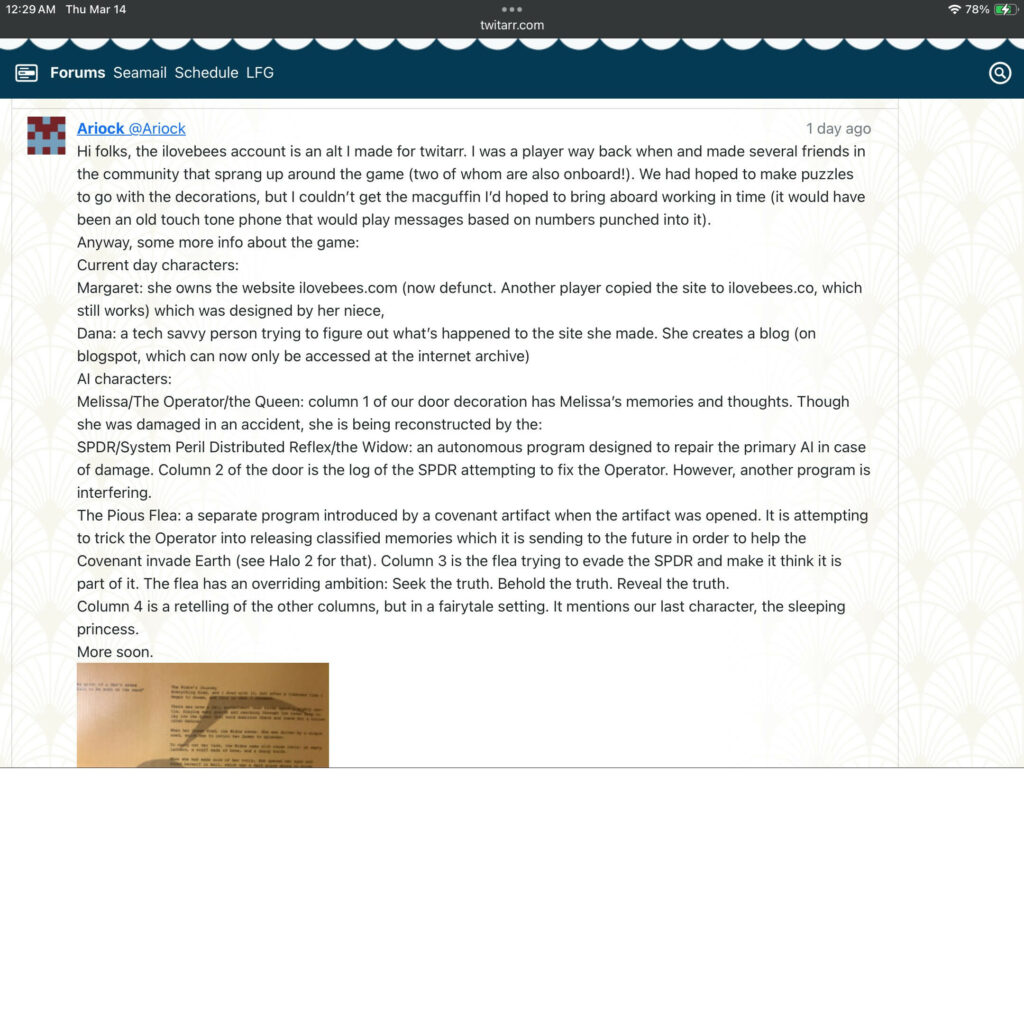
The next day’s writeup gave more details about the story:
“Hi folks, the ilovebees account is an alt I made for twitarr. I was a player way back when and made several friends in the community that sprang up around the game (two of whom are also onboard!). We had hoped to make puzzles to go with the decorations, but I couldn’t get the McGuffin I’d hoped to bring aboard working in time (It would have been an old touch-tone phone that would play messages based on numbers punched into it).
Anyway, some more info about the game:
Current day characters:
Margaret: She owns the website ilovebees.com (now defunct. Another player copied the site to ilovebees.co, which still works) which was designed by her niece,
Dana: a tech savvy person trying to figure out what’s happened to the site she made. She creates a blog on blogspot (which can now only be accessed via the internet archive) where she asks people to help her figure out what’s going on.
AI characters on the website:
Melissa/The Operator/the Queen: column 1 of our door decoration has Melissa’s memories and thoughts. Though she was damaged in an accident, she is being reconstructed by the:
SPDR/System Peril Distributed Reflex/the Widow: an autonomous program designed to repair the primary AI in case of damage. Column 2 of the door is the log of the SPDR attempting to fix the Operator. However another program is interfering.
The Pious Flea: a separate program introduced by a Covenant artifact when the artifact was opened. It is attempting to trick the Operator into releasing classified memories which it is sending to the future in order to help the Covenant invade Earth (See Halo 2 for that). Column 3 is the flea trying to evade the SPDR and make it think it is part of it. The flea has an overriding ambition: ‘Seek the truth. Behold the truth. Reveal the truth. That is the law and the whole of the law.’
Column 4 is a retelling of the other columns, but in a fairytale setting. It mentions our last character, the Sleeping Princess.”
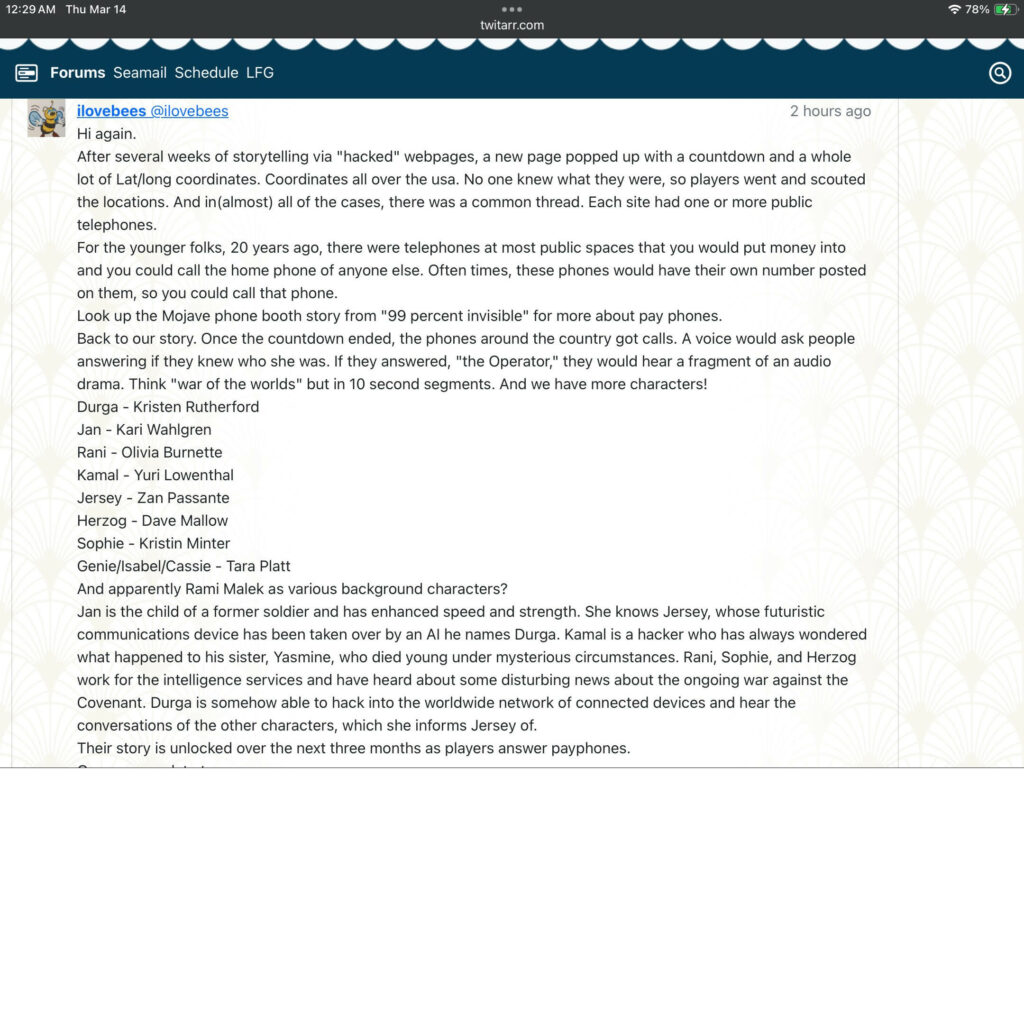
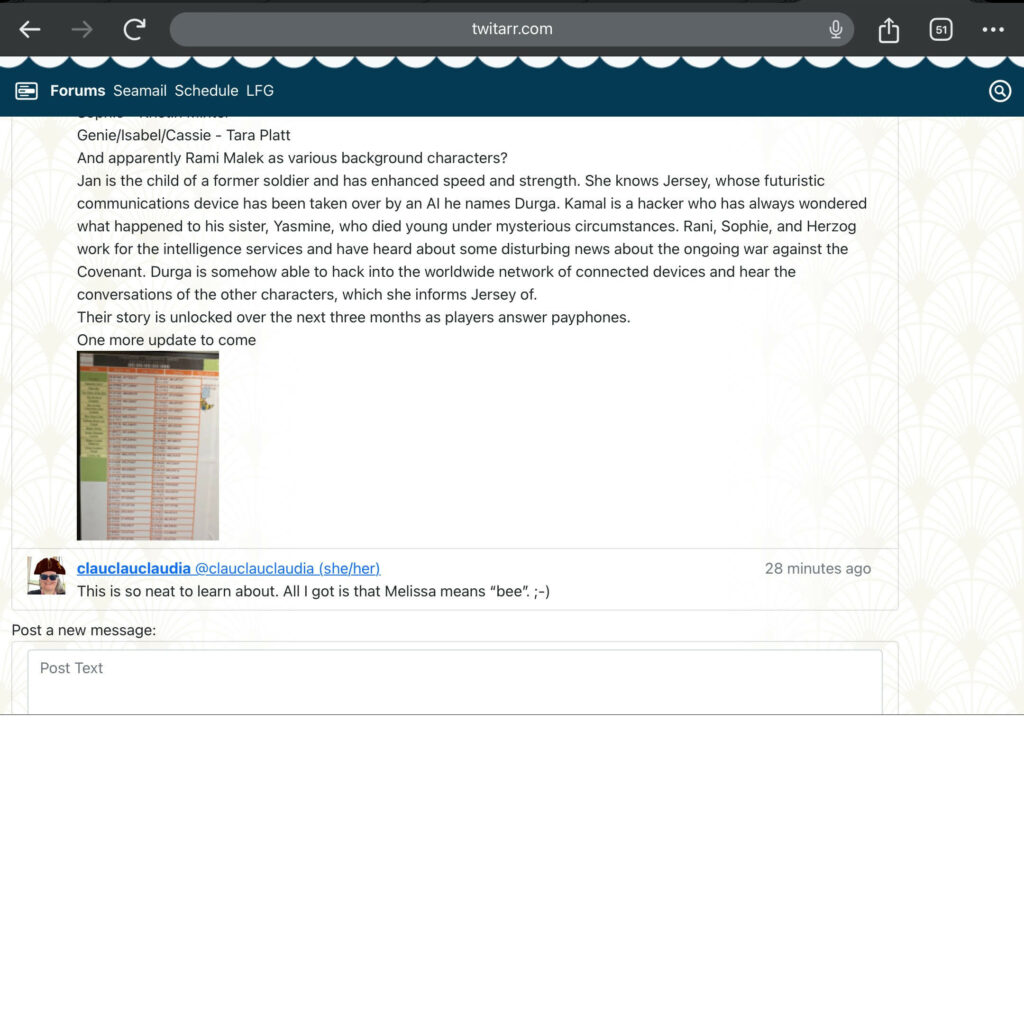
Soon, it was time to tell the story of the countdown and what it meant.
“After several weeks of storytelling via “hacked” webpages, a new page popped up with a countdown and a whole lot of Lat/Long coordinates. Coordinates all over the USA. No one knew what they were, so players went and scouted the locations. And in (almost) all of the cases, there was a common thread. Each site had one or more public telephones.
For the younger folks, 20 years ago, there were telephones at most public spaces that you would put money into and you could call the home phone of anyone else. Often times, these phones would have their own number posted on them, so you could call that phone from elsewhere.
Look up the “Mojave Phone Booth” story from 99 percent invisible for more about pay phones. [Or I could just add a link now that I’m putting this on my website.]
https://99percentinvisible.org/episode/mojave-phone-booth/
Back to our story. Once the countdown ended, payphones around the country started ringing. A voice would ask people answering if they knew who she was. If they answered “The Operator,” they would hear a fragment of an audio drama. Think, “War of the Worlds,” but in 10 second segments. And we have more characters!
Durga – Kristen Rutherford
Jan – Kari Wahlgren
Rani – Olivia Burnette
Kamal – Yuri Lowenthal
Jersey – Zan Passante
Herzog – Dave Mallow
Sophie – Kristin Minter
Genie/Isabel/Cassie – Tara Platt
And apparently Rami Malek as various background characters?
Jan is the child of a former soldier who’d been trained similarly to the Master Chief (Halo guy). Jan has enhanced speed and strength. She knows Jersey, whose futuristic communications device (chatter) has been taken over by an AI he names Durga. Durga has crash-landed onto Jersey’s chatter, but her memory is hazy. Kamal is a hacker who has always wondered what happened to his sister, Yasmine, who died as a child under mysterious circumstances. Rani, Sophie, and Herzog work for the intelligence services and have heard some disturbing news about the ongoing war against the Covenant. Durga is somehow able to hack into the worldwide network of connected devices and hear the conversations of the other characters, which she informs Jersey of.
Their stories are unlocked over the next few months as players answer payphones.”
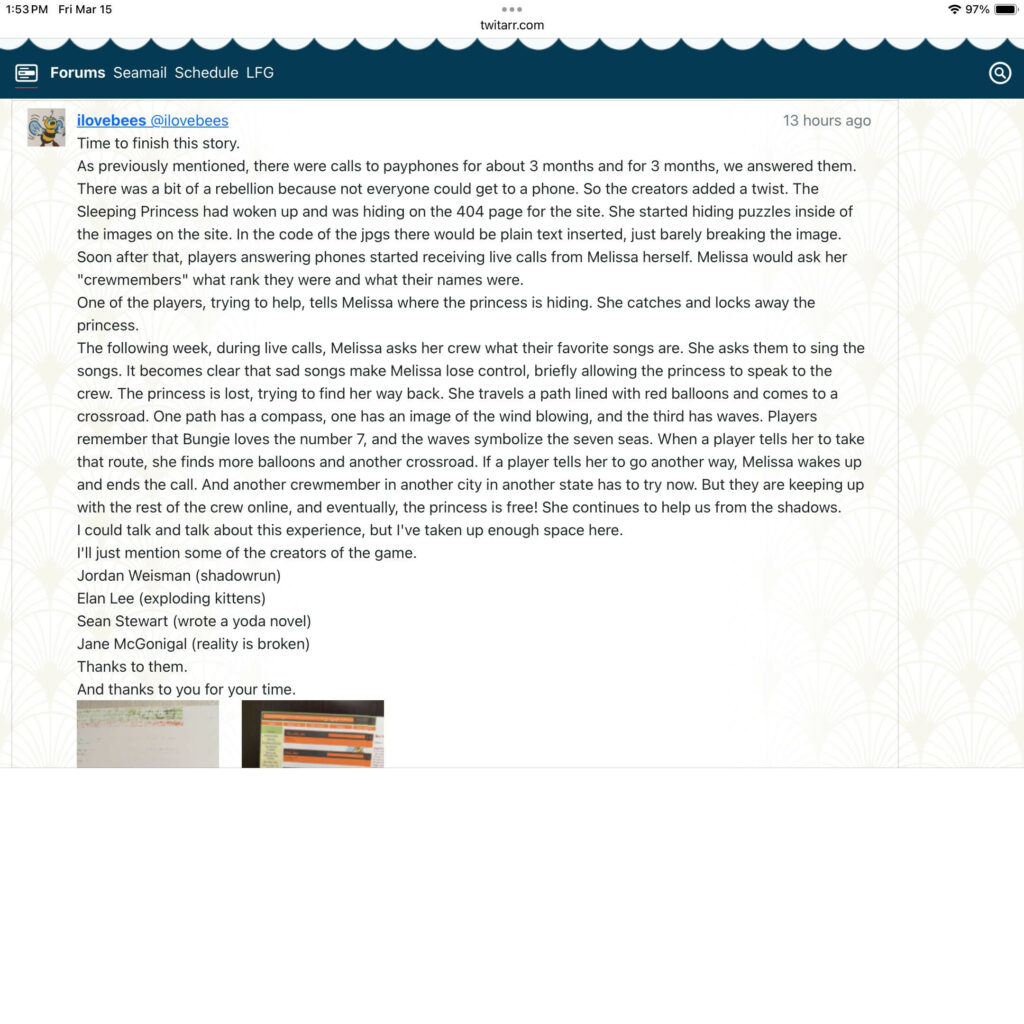
There was one more update on twitarr to give some last context for what we were doing. There is a lot more that could have been said, but these 6 days of updates on a communications platform that disappears at the end of the cruise seemed like enough.
“Time to finish this story.
As previously mentioned, there were calls to payphones for about 3 months, and for 3 months we answered them. There was a bit of a rebellion because not everyone could (or necessarily wanted to) get to a phone. So the creators added a twist. The Sleeping Princess had woken up and was hiding on the 404 page for the site. She started hiding puzzles inside of the images on the site. In the code of the jpgs, there would be plain text inserted, just barely breaking the image, glitching it out. [see the next image for an example]

Soon after that, players answering phones started receiving live calls from Melissa herself. Melissa would ask her “crewmembers” what rank they were and what their names were.
One of the players, trying to help, tells Melissa where the Princess is hiding. She catches and locks away the princess.
The following week, during live calls, Melissa asks her crew what their favorite songs are. Melissa has remembered that hers is “Stormy Weather.” She asks players to sing their songs. It becomes clear that sad songs make Melissa lose control, briefly allowing the Princess to speak to the crew. The Princess is lost, trying to find her way back. She travels a path lined with red balloons and comes to a crossroad. One path has a compass, one has an image of the wind blowing, and the third has waves. Players remember that Bungie loves the number 7, and the waves symbolize the seven seas. When a player tells her to take that route, she finds more balloons and another crossroad. If a player tells her to go another way, Melissa wakes up and ends the call. And another crewmember in another city in another state has to try now. But they are keeping up with the rest of the crew online, and eventually, the Princess is free! She continues to help us from the shadows.
I could talk and talk about this experience, but I’ve taken up enough space here.
I’ll just mention some of the creators of the game (and other things they’ve done):
Jordan Weisman (Shadowrun)
Elan Lee (Exploding Kittens)
Sean Stewart (wrote Dark Rendezvous, a Star Wars novel about Yoda featuring one of the most badass characters, Asajj Ventress)
Jim Stewartson (Google’s Niantic Labs)
Jane McGonigal (Reality is Broken and Superbetter)
Thanks to them
And thanks to you for your time.”
I included two of the websites in this update showing the Princess telling players where she was hiding, and showing progress for the answered phones. Two of the players mentioned on the website in the photo are hmrpita and aliendial.
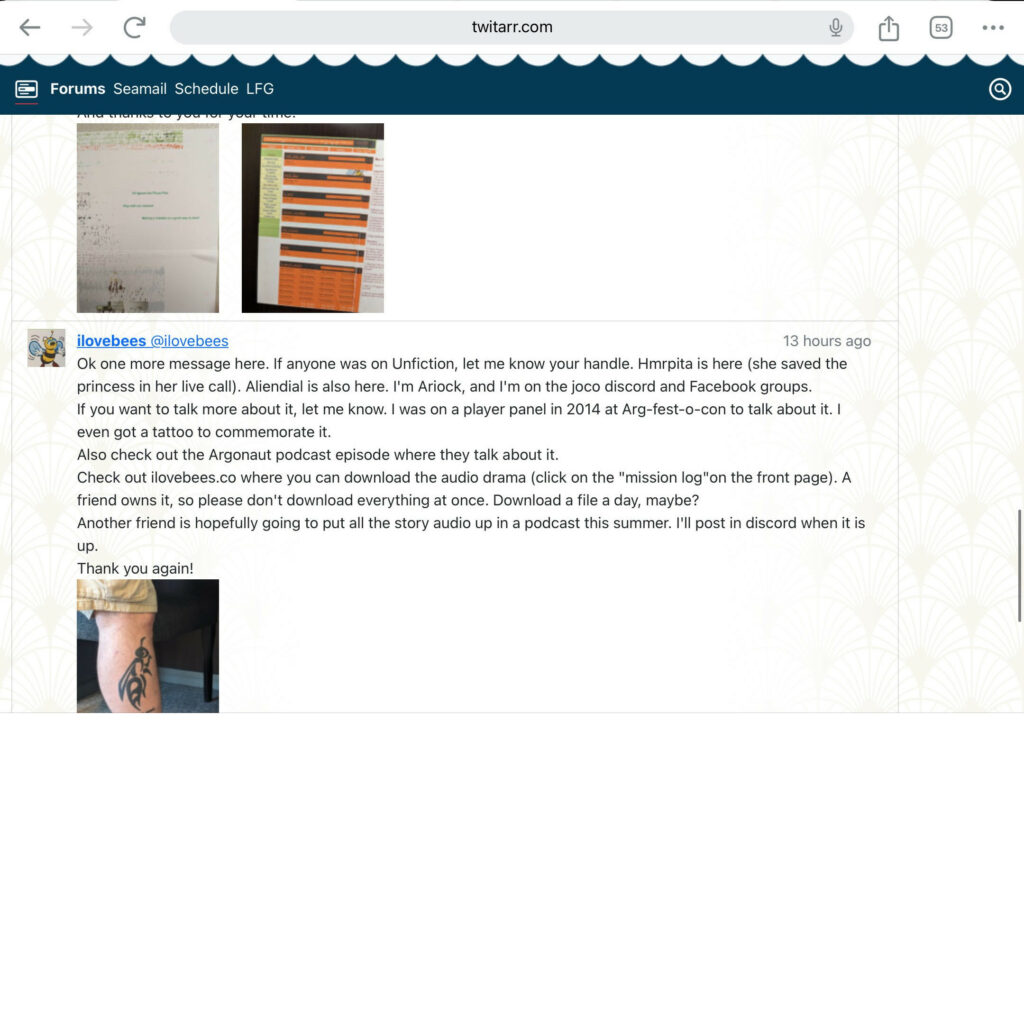
“OK. One more message here. If anyone was on Unfiction, let me know your handle. Hmrpita is here (she saved the Princess in her live call). Aliendial is also here. I’m Ariock, and I’m on the JoCo discord and Facebook groups. If you want to talk more about it, let me know. I was on a player panel in 2014 (the ten year anniversary) at Arg-Fest-O-Con to talk about it. I even got a tattoo to commemorate it.
Check out ilovebees.co where you can download the audio drama (click on the “mission log” on the front page). A friend owns it, so please don’t download everything at once. Download a file a day, maybe?
[Link to a podcast removed. I started listening to their episodes about another ARG (Find the Lost Ring) and it’s not good. Instead, I will recommend checking out https://wonderweasels.org/apiary/guide.htm which has a great timeline of the game with commentary.]
Another friend is hopefully going to put all the story audio up in a podcast this summer. I’ll post in discord [on various other social media] when it’s up.
Thank you again!”
